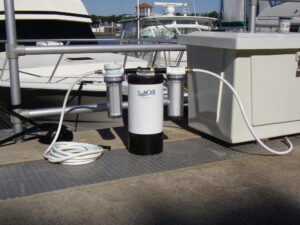Guide to Maintaining Your Portable Water Softener: Tips from SoftCell
Portable water softeners like those from SoftCell have become indispensable tools for many homeowners and travelers who deal with hard water. Whether you’re using it in your home, RV, or while traveling, proper maintenance is crucial to ensure your softener continues to operate effectively and extends its lifespan. In this comprehensive guide, we’ll share expert tips on how to maintain your SoftCell portable water softener, ensuring you get the best performance and value out of your investment.

Understanding Your SoftCell Portable Water Softener
Before diving into maintenance, it’s important to understand how your SoftCell portable water softener works. These units typically operate using ion exchange technology to remove calcium, magnesium, and other minerals from hard water. This process prevents scale buildup, protects appliances, and improves water quality.
Regular Maintenance Tips
- Check Salt Levels Regularly: One of the most important aspects of maintaining a salt-based portable water softener is to ensure it has enough salt. Check the salt level in your brine tank at least once a month and refill it as necessary. Make sure to use the type of salt recommended by SoftCell to avoid issues such as salt bridging or mushing.
- Clean the Brine Tank: Annually cleaning the brine tank of your water softener is advisable to prevent salt buildup and to keep the system running efficiently. Turn off the water supply, drain the tank, and clean it with soap and warm water. Be sure to rinse it thoroughly before refilling with salt.
- Resin Bed Care: The resin beads in your SoftCell water softener occasionally need cleaning, especially in areas with iron-rich water. Resin cleaner can help maintain the ion-exchange capacity of the resin beads, ensuring effective softening. Follow the manufacturer’s instructions for the appropriate amount and frequency. You can find resin cleaners at Home Depot.
- Check for Salt Bridges: Sometimes, a hard crust or bridge forms in the brine tank, which prevents salt from dissolving into the water to regenerate the resin beads. If you notice your water isn’t as soft as usual, check for a salt bridge. Break it up carefully using a broom handle or a similar tool.
- Replace Pre-Filters: If your SoftCell unit includes pre-filters, replace them according to the manufacturer’s schedule. Pre-filters are crucial for removing larger particles before water hits the softener, ensuring smoother operation and preventing damage. Replacement filters can be purchased from Lowe’s.
- Regularly Test Water Hardness: To ensure your softener is working correctly, test your water hardness regularly. This can be done using water testing kits available online or at home improvement stores like Amazon.
Professional Servicing
While many aspects of water softener maintenance can be handled on your own, having your system checked by a professional every few years is a good practice. They can perform a comprehensive check of all components, including control valves and other mechanical parts, which might be harder for you to assess on your own.
Why Maintenance Matters
Keeping up with maintenance not only ensures that your SoftCell portable water softener works efficiently but also prevents costly repairs and prolongs the unit’s life. Regular care keeps your water tasting better, improves skin and hair health, and helps avoid unexpected breakdowns.
Conclusion
Proper maintenance of your SoftCell portable water softener is key to enjoying soft water consistently. By following these tips, you can ensure your softener remains in top condition, providing excellent water quality wherever you are. Remember, taking care of your water softener is not just about prolonging its life but also about enhancing your overall water usage experience.
For more information on SoftCell water softeners and detailed product maintenance guides, visit SoftCell Water Softeners. Explore our resources to keep your water softener performing at its best, year after year.
